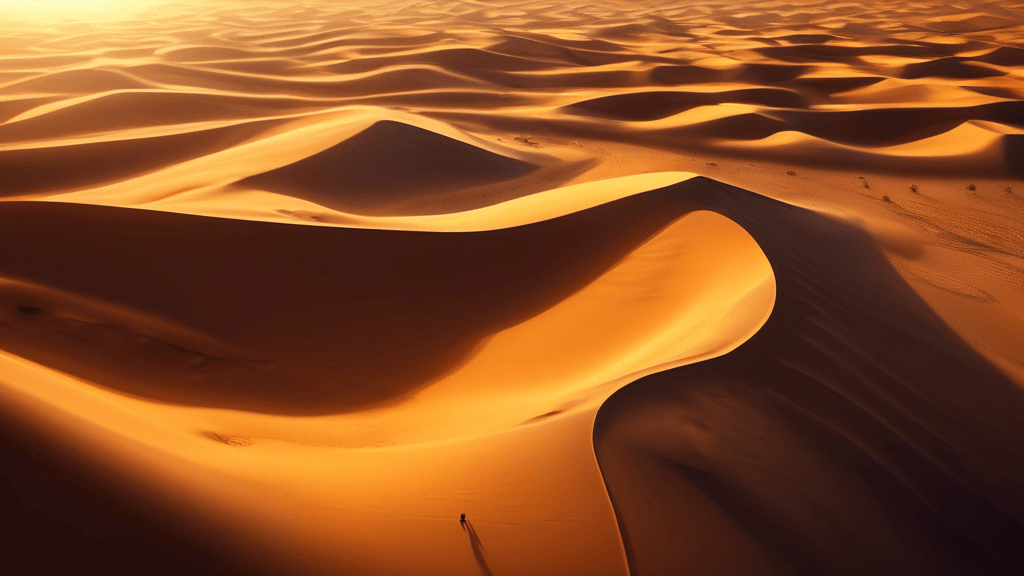
Capturing the Beauty of Sand Dunes: Patterns and Textures in Landscape Photography
Share
The Art of Photographing Sand Dunes
Sand dunes, with their ever-changing shapes, patterns, and textures, present a fascinating subject for landscape photographers. But what makes these natural phenomena so captivating? And how can photographers best capture their unique beauty?
Understanding Sand Dunes
Before diving into the techniques of photography, it's crucial to have a foundational understanding of what sand dunes are and how they form. Sand dunes are dynamic structures that are primarily formed by the wind's movement of sand. This results in a variety of shapes and sizes, which can be broadly categorized into crescent, linear, star, and dome-shaped dunes. Each type offers different patterns and textures, a feast for the artistic eye.
The Aesthetic Appeal of Dune Photography
What sets dune photography apart from other forms of nature photography? Consider these elements:
- Light and Shadow: The interplay of light and shadow is especially dramatic in sand dunes. Early morning or late afternoon are prime times to capture sharp contrasts that accentuate the dunes' curves and edges.
- Minimalism: The simplicity of a sand dune image can convey a sense of calm and purity. This minimalism draws the viewer’s focus to the subtle textures and natural lines of the landscape.
- Texture and Detail: The fine details of sand texture, which can be highlighted by side lighting, add depth and interest to photographs.
Sand dunes embody a mysterious beauty. Capturing their essence through photography is not merely about the act itself, but about understanding the silent, yet powerful language of nature, remarks renowned landscape photographer, Michael Benson.
Techniques for Capturing Stunning Dune Photographs
To truly capture the essence of sand dunes, photographers should consider several techniques:
- Time of Day: Lighting is crucial. The low sun at sunrise or sunset can create fascinating patterns and shadows that are not visible during the harsh light of midday.
- Composition: Pay attention to the lines and curves of the dunes. They can lead the viewer's eye through the image, creating a sense of movement and flow.
- Color Contrast: While many dune photographs are monochromatic, playing with the subtle color variations can add a surprising layer of depth. Occasionally, the sky or a distant mountain can provide a dramatic backdrop.
- Equipment Choices: A sturdy tripod is a must due to often windy conditions. Additionally, a variety of lenses may be employed, though telephoto lenses can help compress the scene, heightening the abstract feel of a dune landscape.
- Experimentation: Do not hesitate to experiment with angles and perspectives. Sometimes, the most striking image is found from a non-traditional viewpoint.
Conservation through the Lens
Photography is not just about capturing beauty; it's also a powerful tool for conservation. Sand dunes are sensitive ecological zones, and through evocative imagery, photographers can play a crucial role in highlighting the need for their protection. Images that capture the natural allure and the fragility of these landscapes can help in rallying conservation efforts.
Dr. Sarah Gordon, a leading expert in ecological preservation, emphasizes, Images have the power to connect people with landscapes that they may never visit. They serve not only as documentation but also as motivation for conservation.
Final Thoughts
Whether you're a seasoned landscape photographer or a beginner, the sand dunes offer a spectacular and enriching subject for your art. The key is to approach them with patience, respect, and a willingness to see the profound beauty in their subtle details. As photographers, we hold the responsibility not only to capture these moments but also to advocate for the preservation of such extraordinary natural environments through our work.
So why not grab your camera, head to the nearest sand dunes, and let the landscape tell its story through your lens? Remember, every shot contributes to the larger picture of environmental conservation and understanding.
Are you ready to explore the artistic and conservational journey that dune photography offers?





